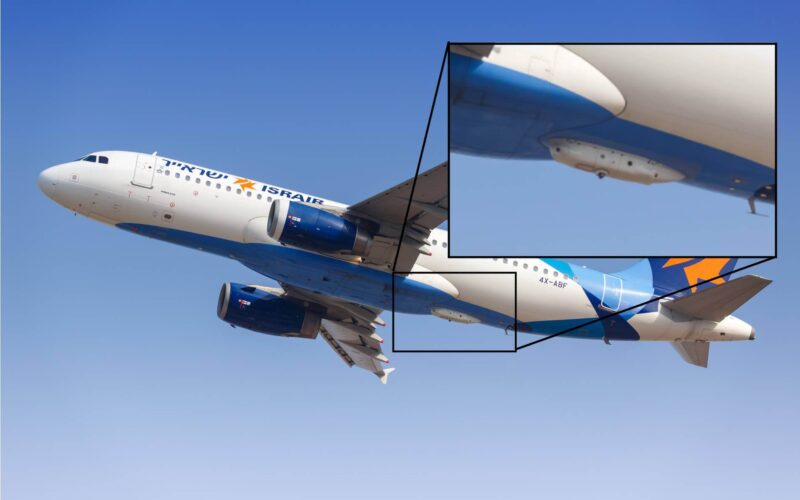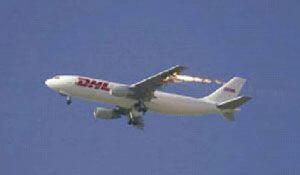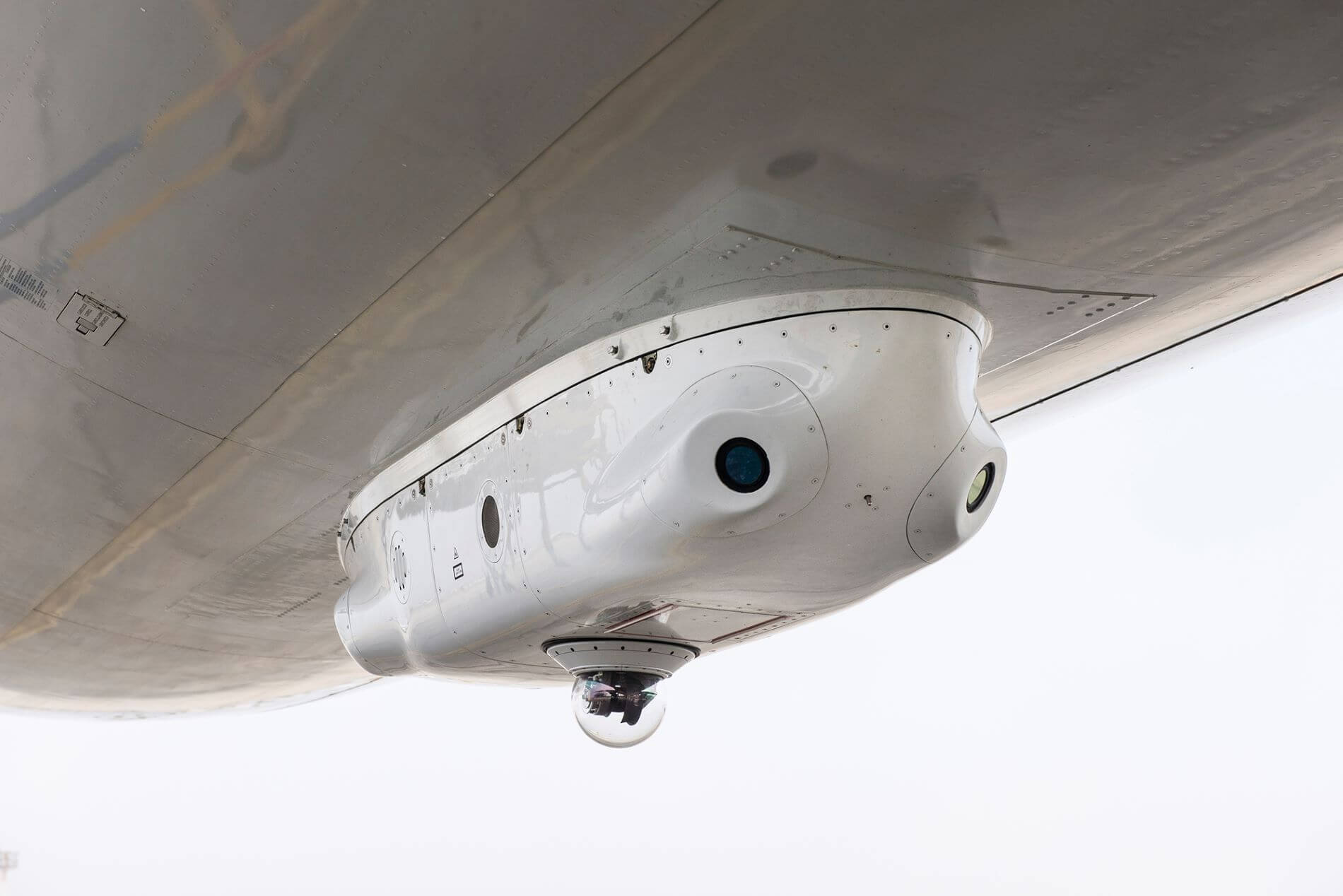As El Al’s Boeing 737 took off for the first commercial flight between Israel and United Arab Emirates, under its belly one could see a small oval pod, called C-MUSIC. Why was it mounted there, and what would happen if someone tried to shoot down the plane? Let’s dive down into the world of civilian-mounted air-defense systems.
The new generation of man-portable air-defense systems (MANPADS) became a salvation for world’s armies and the nightmare of the world’s air forces in the 70s. Those systems were relatively cheap, highly transportable, and required next to no training to operate. After firing, a missile would home in on a heat source, such as an exhaust of an aircraft engine, and track it until the impact.
These systems have short range, as they are designed to protect soldiers from attacking helicopters and airplanes. The target has to be flying low and relatively slow. Exactly the way any civilian airliner behaves while taking off and landing.
Air Vietnam Douglas C-54D-5-DC most likely became the first passenger aircraft to be shot down by MANPADS in 1975, killing all 20 passengers and crew. Although several similar attacks happened in the following decade, they were not common. The situation changed radically in the early 90s, as after the dissolution of the Soviet Union, ex-Red Army MANPADS flooded the black market, and became available to all kinds of insurgents, guerrillas and terrorist groups across the world.
In 1993, MANPADS were used to shoot down a jet carrying presidents of Rwanda and Burundi. In 1998, Lionair Antonov An-24 was brought down over Sri Lanka killing 55 people. In 2003, DHL Airbus A300 was hit over Baghdad, but pilots miraculously managed to land the burning airplane. These are just some of the dozens attempted and successful examples, as, according to an estimate of the U.S. Department of State, more than 800 deaths were caused by MANPADS attacks on civilian aircraft between 1975 and 2006.
DHL Airbus A300 after being hit with MANPADS over Baghdad (Photo: U.S. Department of Homeland Security)
Measuring countermeasures
The catalyst for change came in 2002, as during the Mombasa attacks al-Qaeda militants fired two MANPADS at Arkia Airlines Boeing 757 taking off from Moi International Airport (MBA). Both missiles missed, but Israeli Ministry of Transportation ordered Flight Guard, a defense system previously used only on military aircraft, to be tested on airliners.
Since the appearance of heat-seeking missiles, military aircraft have been fitted with countermeasures in the form of flares – decoys, designed to be dropped as soon as a missile is detected. Burning flares would distract or confuse heat-seeking warheads and lead them away from the aircraft. Flight Guard is one of such systems, consisting of sensors and flare-dispensing mechanisms. It was promptly fitted on several airliners belonging to El Al, Arkia and Israir.
But the problem is that dropping dozens of white-hot burning flares over a civilian airport or densely populated area is not a particularly good idea. False alarms sometimes occur, and even in an event of a real attack, setting the whole neighborhood on fire could be considered problematic. Hence, in 2006, a number of European countries banned El Al aircraft equipped with Flight Guard.
Better systems had to be developed. One of possible solutions is using flares with pyrophoric substance instead of various metal-based compositions. Such substances are set on fire after contact with the air, burn at lower temperatures, and mimic the heat signature of a jet engine more closely. Swedish Saab Avitronics began offering their Civil Aircraft Missile Protection System (CAMPS), equipped with such flares, in 2007.
Even more elegant solutions were looked into by the world’s militaries. By far the most prominent of them is Directional Infrared Countermeasures (DIRCM). A system that would, after detecting a missile, disable or destroy it with a high-power laser. Developed by a number of countries, DIRCMs are currently being widely adopted and fitted on anything from fighter jets to transport aircraft.
Several such products are aimed at the civilian market as well. Israeli Elbit Systems were one of the first to adapt their MUSIC (Multi Spectral infrared Counter), adopted by numerous air forces, to commercial airliners with C-MUSIC. Northrop Grumman developed the military DIRCM AN/AAQ-24 Nemesis system into the Guardian, which went into testing in 2005, but faced a streak of delays and stoppages. There is Misys by Leonardo, Jet Eye by BAE Systems, and some others.
C-MUSIC DIRCM pod (Photo: Elbit Systems)
They all look and function fairly similar. Having to be light and compact, as well as easily installable on an aircraft not designed to carry defensive mechanisms, civilian DIRCMs take the shape of one or several pods. They are attached under the rear side of an aircraft’s fuselage, covering a direction from where a missile is most likely to approach.
Various kinds of sensors that detect missile launches by their heat signature, smoketrail, or other features, are contained within the pod. As soon as the launch is identified, the system notifies the aircraft crew of the threat, and automatically directs a high-power laser at it. Infrared lasers are most commonly used, as they pose the least threat of collateral damage, and can jam the heat-seeking warhead, directing it away from the aircraft.
The money and other problems
So, what prevents airlines or manufacturers from attaching a DIRCM pod to every passenger and cargo aircraft? Of course, the biggest problem is the cost. C-MUSIC is priced at $1 million per unit, other systems have similar prices of $1 to $3 million. Northrop Grumman, in their pitch to sell Guardian, say that wide adoption of infrared countermeasures would increase an average ticket cost by just $1.
But airlines are not impressed. In addition to the cost of systems themselves, pods are adding weight, weakening the plane’s aerodynamics, and adding to maintenance expenditures. Israeli airlines were the only ones to adopt them on any sort of wide scale, and even then, DIRCMs are mounted only on aircraft considered to be flying on particularly dangerous routes.
Such an approach – shifting countermeasures between planes, adding them when considered necessary – may be a solution, which, coupled with possible decrease of defense systems’ costs in the future, may prompt wider application.
Another approach was proposed by the U.S. Department of Homeland Security in the Project CHLOE. The idea was to mount DIRCMs not on aircraft themselves, but on high-flying drones, that would circle over world’s airports, protecting aircraft beneath them. Not many updates on the project came in recent years, but even in the initial stages, a lot of problems with such an idea were cited. Cost of continually operating scores of expensive drones, impact of them flying in high-traffic areas, and so on. On top of all, the project was aimed at deploying defenses over airports in the United States, where the threat of MANPADS is simply not present.
Their threat is paling in other parts of the world as well. Instead, another one emerges – that of radar-guided missiles. Malaysia Airlines MH17 was shot down by one, as was Siberia Airlines Flight 1812 in 2001, and Ukraine International Airlines Flight 752 in 2020. All of these incidents most likely happened by mistake, after operators of massive, powerful air defense systems mistook airliners for military aircraft. Defense from such systems is much more difficult, given that radar-guided missiles have very long range, require much more sophisticated countermeasures, and are usually operated by skilled personnel. After the MH17 incident, there were calls to outfit airliners with electronic warfare equipment and chaff-dispensing systems, but their cost makes DIRCMs look cheap.
The advancement of MANPADS is happening as well. The latest generation, adopted by militaries around the world, have greater range and employ a number of anti-countermeasure tricks. They are much more difficult to be blinded or disabled by laser, and use sophisticated algorithms to distinguish heat signatures of engines from flares. Harsh steps have to be taken not to allow for such a technology to slip into the wrong hands, but there is a high chance that it eventually will. DIRCMs will have to evolve too, which could mean even higher costs.



